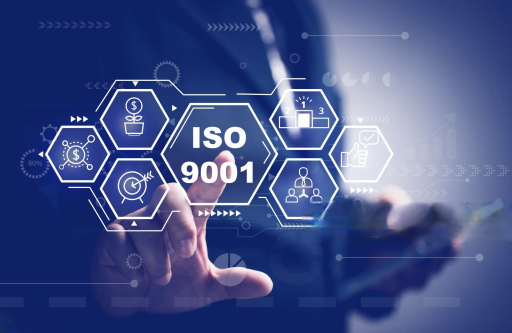I. Introduction
A. Brief Overview of ISO 9001 Certification
ISO 9001 certification provides a standardized framework for quality management systems, ensuring organizations meet stringent quality requirements. It serves as a mark of excellence, signifying a commitment to delivering products and services that consistently meet customer expectations.
B. Importance of ISO 9001 for Businesses
The significance of ISO 9001 for businesses lies in its ability to enhance operational efficiency, customer satisfaction, and overall organizational performance. By adhering to ISO 9001 standards, businesses can streamline processes, improve product/service quality, and establish a foundation for continuous improvement. This certification not only meets regulatory expectations but also positions businesses competitively in the global market by demonstrating a dedication to quality and customer-centric practices.
II. Understanding ISO 9001 Certification
A. Definition of ISO 9001
ISO 9001 is a globally recognized standard delineating the criteria for establishing a robust quality management system within an organization. It provides a framework for achieving consistent product and service quality, emphasizing a customer-centric approach and continuous improvement.
B. History and Evolution of the ISO 9000 Series
Emerging from its roots in British manufacturing standards, the ISO 9000 series has undergone a transformative journey, evolving into a globally recognized international standard. This evolution signifies a pivotal shift, establishing it as a fundamental cornerstone in the realm of quality management. The transformation resonates with a worldwide dedication to elevating quality practices across an array of diverse industries. This adaptability ensures that the ISO 9000 series remains not only relevant but also inherently applicable in the dynamic and ever-changing landscape of contemporary business.
C. Key Principles of Quality Management under ISO 9001
At the heart of ISO 9001 lie foundational principles that intricately shape quality management. These principles, namely customer focus, leadership engagement, and a dedicated process-oriented approach, serve as guiding lights for organizations. Beyond adherence to standards, they propel the fostering of a robust culture marked by continuous improvement initiatives, active participation of employees in decision-making processes, reliance on evidence-based decision-making, and the cultivation of mutually beneficial relationships with suppliers.
III. Benefits of ISO 9001 Certification
A. Enhancing Customer Satisfaction
ISO 9001 certification plays a pivotal role as a key driver in the elevation of customer satisfaction. By strategically prioritizing customer-centric principles, organizations not only showcase their commitment to comprehensively understanding and exceeding customer expectations but also actively foster a sense of trust. This commitment, rooted in ISO 9001 standards, becomes a cornerstone in cultivating enduring loyalty, establishing a long-lasting and mutually beneficial relationship with customers.
B. Improving Product and Service Quality
ISO 9001 certification holds a notable advantage in its ability to systematically enhance the quality of products and services within organizations. By steadfastly adhering to the rigorous standards set by ISO 9001, organizations are prompted to institute processes that place paramount importance on consistency, traceability, and a relentless pursuit of continual improvement. This unwavering dedication culminates in the attainment of elevated quality standards, resulting in a tangible reduction of defects and a commendable minimization of customer complaints.
C. Streamlining Operational Processes
ISO 9001 certification plays a crucial role in the streamlined efficiency of operational processes within organizations. Emphasizing a process-oriented approach ensures effectiveness and efficiency across various business functions. This not only minimizes waste and inefficiencies but also enhances overall operational performance, fostering a culture of continual improvement that propels organizational success.
III. The ISO 9001 Certification Process
A. Initial Steps to Consider Before Applying
Before embarking on the ISO 9001 certification journey, organizations should first undertake crucial preliminary measures. These include a comprehensive assessment of current processes, identification of relevant stakeholders, and establishment of clear quality objectives. By laying this groundwork, organizations set the stage for a smoother and more effective certification process.
B. Detailed Overview of the Certification Process
The ISO 9001 certification process demands a meticulous and structured approach, ensuring strict adherence to the standards of quality management. This comprehensive journey involves multifaceted activities, including the implementation of a robust quality management system, conducting internal audits to thoroughly assess readiness, and active engagement with a certification body for the culmination of an external audit. A nuanced understanding of each stage within this process is paramount for organizations aspiring to achieve not just certification but a seamless and effective implementation of ISO 9001 standards.
C. Required Documentation and Preparations
A crucial facet of the ISO 9001 certification process entails meticulous documentation and thorough preparations. Organizations are tasked with the imperative of compiling and organizing a comprehensive set of documentation, encompassing quality manuals, procedures, and records, ensuring meticulous alignment with the stringent requirements of ISO 9001. The journey toward successful certification necessitates a dedicated focus on adequate preparation, involving initiatives such as training employees to grasp the intricacies of the quality management system, conducting rigorous internal audits to identify areas for improvement, and proactively addressing any identified gaps.
IV. Implementing ISO 9001 Standards in Your Business
A. Establishing a Quality Management System (QMS)
At the core of ISO 9001 implementation lies the foundational step of establishing a robust Quality Management System (QMS). This strategic initiative necessitates a comprehensive approach, involving the meticulous definition of processes, formulation of clear quality policies, and the development of detailed procedures. The objective is to ensure not only a systematic but also a standardized approach to quality management across the entire organizational framework. This proactive foundation establishes a strong framework for adherence to ISO 9001 standards, fostering a culture of continual improvement and excellence within the organization.
B. Engaging Employees and Management
Fostering active engagement among both employees and management is a crucial aspect of achieving successful ISO 9001 certification. This involves creating widespread awareness about the numerous benefits associated with ISO 9001. Providing comprehensive training ensures the understanding of quality objectives, cultivating a culture where everyone is aligned with the principles and goals of the Quality Management System (QMS).
C. Identifying and Documenting Processes
ISO 9001 involves the thorough identification and meticulous documentation of processes. Organizations must map out their procedures, define key activities, and document processes with precision to ensure clarity and consistency. Beyond facilitating effectiveness, this comprehensive documentation serves as a valuable reference point for audits and fuels continual improvement initiatives. By establishing a detailed record of processes, organizations not only ensure compliance with ISO 9001 standards but also pave the way for a culture of transparency, accountability, and sustained excellence within their operational landscape.
V. Conclusion
Highlighting the pivotal role of ISO 9001 certification, businesses stand to gain significant advantages. It serves as a concrete manifestation of a commitment to impeccable quality management standards, resulting in heightened customer satisfaction, elevated product and service quality, and streamlined operational processes. Beyond compliance, ISO 9001 certification becomes a strategic investment, fostering a culture of excellence within the organizational fabric.











Comments
Best-Selling & Trendy Watches for Kids You Must Buy This Season